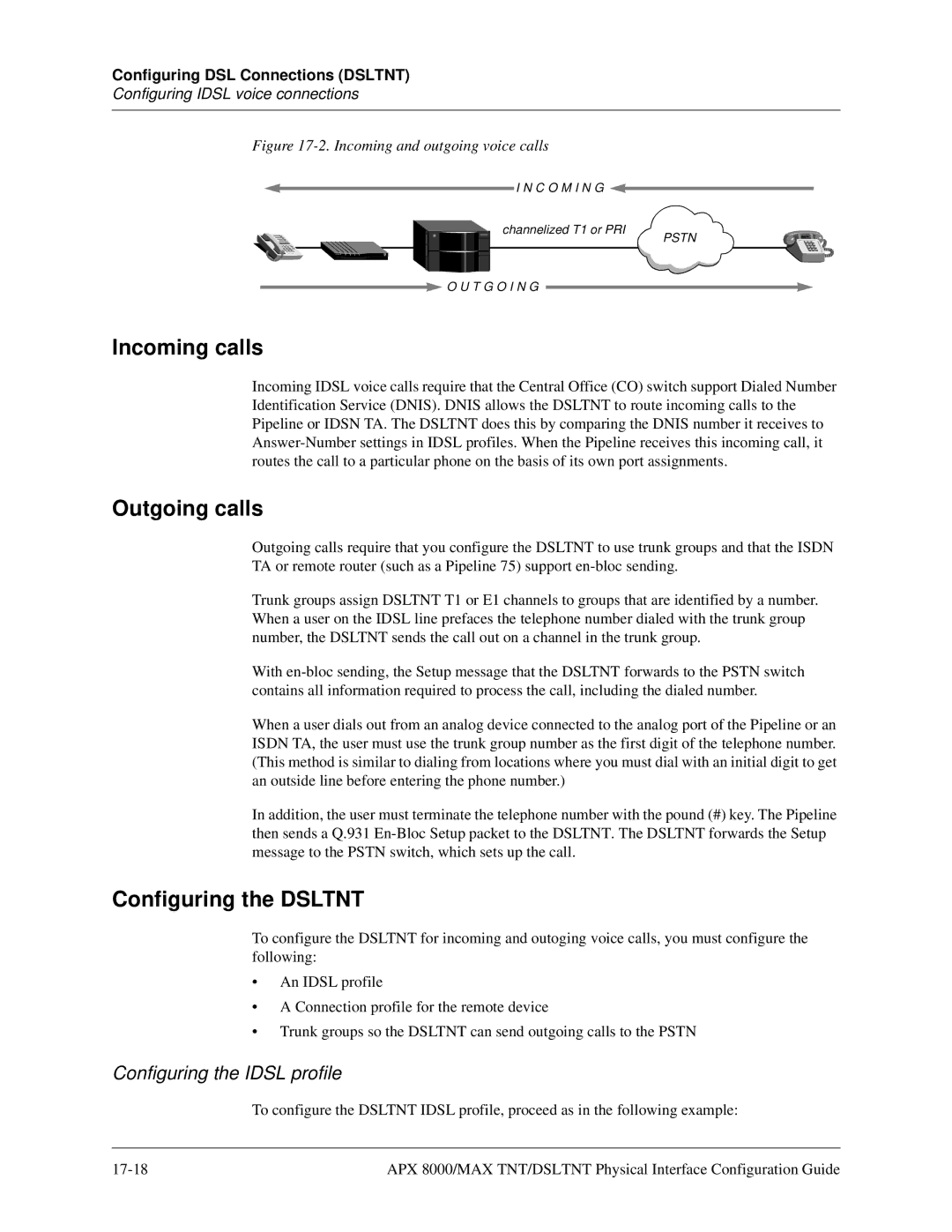
Configuring DSL Connections (DSLTNT)
Configuring IDSL voice connections
Figure 17-2. Incoming and outgoing voice calls
I N C O M I N G
channelized T1 or PRI
![]() O U T G O I N G
O U T G O I N G
Incoming calls
PSTN
Incoming IDSL voice calls require that the Central Office (CO) switch support Dialed Number Identification Service (DNIS). DNIS allows the DSLTNT to route incoming calls to the Pipeline or IDSN TA. The DSLTNT does this by comparing the DNIS number it receives to
Outgoing calls
Outgoing calls require that you configure the DSLTNT to use trunk groups and that the ISDN TA or remote router (such as a Pipeline 75) support
Trunk groups assign DSLTNT T1 or E1 channels to groups that are identified by a number. When a user on the IDSL line prefaces the telephone number dialed with the trunk group number, the DSLTNT sends the call out on a channel in the trunk group.
With
When a user dials out from an analog device connected to the analog port of the Pipeline or an ISDN TA, the user must use the trunk group number as the first digit of the telephone number. (This method is similar to dialing from locations where you must dial with an initial digit to get an outside line before entering the phone number.)
In addition, the user must terminate the telephone number with the pound (#) key. The Pipeline then sends a Q.931
Configuring the DSLTNT
To configure the DSLTNT for incoming and outoging voice calls, you must configure the following:
•An IDSL profile
•A Connection profile for the remote device
•Trunk groups so the DSLTNT can send outgoing calls to the PSTN
Configuring the IDSL profile
To configure the DSLTNT IDSL profile, proceed as in the following example:
APX 8000/MAX TNT/DSLTNT Physical Interface Configuration Guide |
